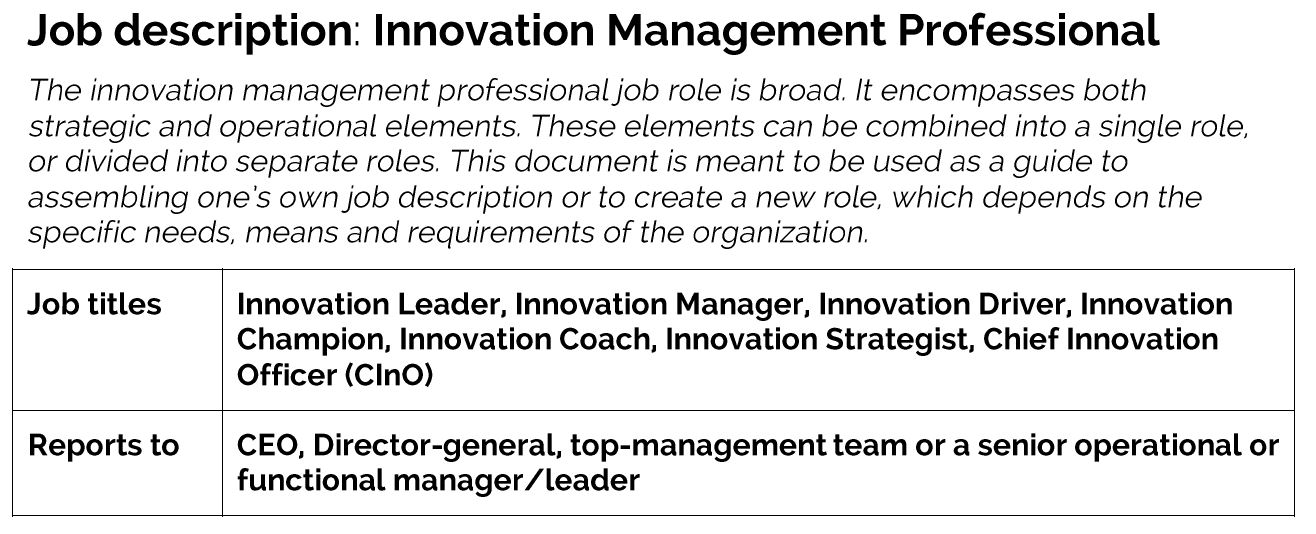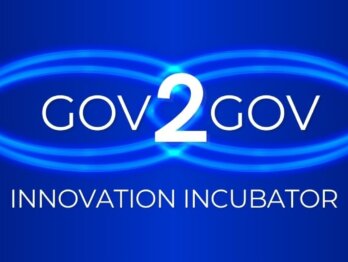Getting serious about innovation management

This is a guest post from Magnus Karlsson, project manager, innovation management system at RISE Research Institutes of Sweden and national expert and chair of TK 532 innovation management at SIS Swedish Institute for Standards. Magnus shares some of the work being done to develop standards around innovation management, and its relevance to the public sector.
Towards a common platform for boosting innovation management in public sector organisations
The urgency to innovate in the public sector is growing every day. Citizens are demanding better services without spending more, new technologies are presenting new ways of doing things, and new societal challenges continue to emerge on the public agenda.
And several national governments are taking actions to stimulate public sector innovation in different ways. The OECD Declaration on Public Sector Innovation is becoming an important instrument to support this movement.
Building on the Declaration, there seems to be an agreement that innovation efforts must be led and organised in a more systemic and systematic way to be effective. Isolated, episodic, and ad hoc innovation activities will not do the job. This is also a conclusion from innovation management research and is equally valid for all types of organisations, public or private.
As a consequence, two critical questions must be addressed going forward. Where can public organisations find credible guidance for a systemic and systematic approach? And how can they find or train people with the right innovation management skills in their organisations?
Developing innovation management standards
In an attempt to answer the first question, work has been going on for the past 10 years at the international level to establish a common framework that can guide innovation efforts in organisations. More than 50 countries and experts from public and private organisations have participated in this work led by the International Organization for Standardization (ISO).
Three important parts of this work are relevant for public sector innovation. First, terms and definitions can help to establish a common understanding and language. What do we actually mean when talking about innovation, disruptive innovation, or innovation strategy? The OECD has been a liaison to this part of the ISO work and insights are reflected in the new Oslo Manual 2018. The resulting document, ISO 56000 Innovation Management – Fundamentals and Vocabulary, will be published during 2019.
Second, ISO 56002:2019 Innovation Management System – Guidance, published in July 2019, describes the different elements or factors that should be considered by any organisation seeking to boost its capability to innovate. Examples of such factors are having top management commitment and mandate, clear roles and responsibilities, understanding of external trends and needs, an innovation strategy and associated allocation of resources, innovation competence development, generic innovation processes as well as improvement of the innovation management system itself (following the logic of ‘plan, do, check, act’). The document is not prescriptive but should rather be used as a reference framework and check list that captures the systemic nature of innovation activities. A gap analysis based on the guiding standard can help an organisation to focus the attention at the right factors and capabilities. ISO 56002 has the structure of a management system standard and can be easily integrated with other management systems already in place in the organisation, such as quality or environment.
The third part that can be used by public sector organisations is the eight innovation management principles that will be published in ISO 56000. They are the foundation for managing innovation in any organisation and can be used to initiate the dialog about how to lead and organise innovation efforts in the organisation, in line with the ambition of the OECD Declaration.
Several municipalities and other public sector organisations in Sweden have started to use the principles and decided to implement the management system standard for innovation in their organisations. What are the results? Initial findings show that they are able to think more broadly and holistically about their innovation capabilities and that they quickly can identify areas for improving their innovation management system. We will capture learnings and results as we gain further implementation experience. We are just at the beginning of this journey.
Building the innovation management profession
The second question might be even more important for public sector organisations. We need people in our organisations that know and can practice effective innovation management. These people can already be found in many organisations, but they typically have unclear responsibilities, different educational backgrounds, and no defined job role description. The result is poor innovation performance in many cases.
A few years ago, in the Swedish context, we gathered employees from public and private sector organisations that were responsible for leading and organising innovation efforts and for building innovation capabilities in their organisations. As the first step, we established the world’s first national association for innovation management professionals, Innovationsledarna, and created the first version of a common job description for an innovation management professional.

The six generic responsibilities of the description cover a range from developing strategies for innovation activities to more operational task such as coaching individual innovation projects. It is not necessary to cover all tasks. An innovation management professional typically has been assigned three to five of the responsibilities described.
The purpose was to create a common identity among practitioners and to start building the profession of innovation management. We think this is urgently needed in the same way as other professions have developed, such as project management professionals.
The second step was to define the knowledge and skills that an innovation management professional can be expected to master. Same as for the job role description, we started among the members of Innovationsledarna and jointly created the first version of a Body of Knowledge.
The document covers all the areas of responsibility of the job role description and is based on the guiding standards by ISO described above, especially ISO 56000 and ISO 56002. The purpose was to create a credible and independent body of knowledge based on the collective contributions from the international innovation management community and the community of Swedish innovation management practitioners in both public and private organisations, rather than relying on the works of individual consultants and academics.
The Swedish Body of Knowledge and the way it has been developed has generated interest by other countries and internationally. For example, the International Society for Professional Innovation Management (ISPIM) has established a Special Interest Group (SIG) to explore the possibility of creating a global Body of Knowledge for innovation management professionals. This could also be very valuable for public sector organisations.
The third step of building the profession was to consider personal certification for innovation management professionals. We decided to develop our own program since we could not find any existing certification scheme that would fit our needs. We were looking for a program with an independent certification body, that was based on a community-anchored body of knowledge, and that was applicable for both public and private sectors.
After a pilot, funded by Vinnova (Sweden’s innovation agency), the first certification program was launched in 2018. Innovationsledarna provided the Body of Knowledge and RISE (Research Institute of Sweden) acted as the certification body. Training is be provided by independent consultants and training companies based on the Body of Knowledge and is thus not part of the actual certification program.
Candidates seeking to achieve personal certification must have at least three years of relevant innovation management experience, pass a written test and an oral examination based on an individual case report. The full certification requirements are available by contacting RISE.
At the moment, there are about 30 people that are certified or in the process of being certified. About half of these are working for public sector organisations such as municipalities and regional healthcare providers.
The three steps mentioned above have provided a solid foundation for building the profession of innovation management. The impact is being studied in a project by KTH (Royal Institute of Technology). We have already received positive feedback from certified people in public sector organisations. The job role description has provided clarity and legitimacy in the perspective of their managers, while the Body of Knowledge has provided a common direction for competence development, and the personal certification boosts the status and confidence of the innovation management profession.
Public and private sector innovation
The two critical questions discussed in this post are equally important to private sector organisations. Sometimes it is argued that public sector innovation is different from innovation activities in the private sector. In my experience, they are actually more similar than they are different. Effective innovation management boils down to a set of factors that are common for all organisations. Examples are the importance of top management commitment, a strategic direction to focus and allocate resources, attention to the needs and expectations of the end user, and flexible and configurable processes, to name a few. All these factors are captured in the documents above and specific attention has been given to the language used in order to be relevant for all types of organisations.
Another argument is that the public sector has to catch up with innovation management practices in the private sector. Again, in my experience this is not generally the case. Public and private sector organisations must both upgrade their innovation capabilities and there are great opportunities for learning and sharing across the sectors. As a matter of fact, in some cases the public sector can lead the way, for example by implementing innovation management systems according to the guidance discussed here.
Supporting the OECD Declaration on Public Sector Innovation
Taken together, the six instruments discussed above, developed internationally and in Sweden, can contribute to, and form a platform for, implementing the OECD Declaration on Public Sector Innovation. The terms and definitions related to innovation, innovation management system guidance, innovation management principles, job role description for innovation management professionals, body of knowledge, and personal certification are providing a path forward for implementing more systemic and systematic innovation management practices in public sector organisations.
Now is the time to take on the big societal challenges, make use of the available instruments for guidance, and take innovation management to the next level! The OECD and OPSI play important roles in driving and supporting this movement.












